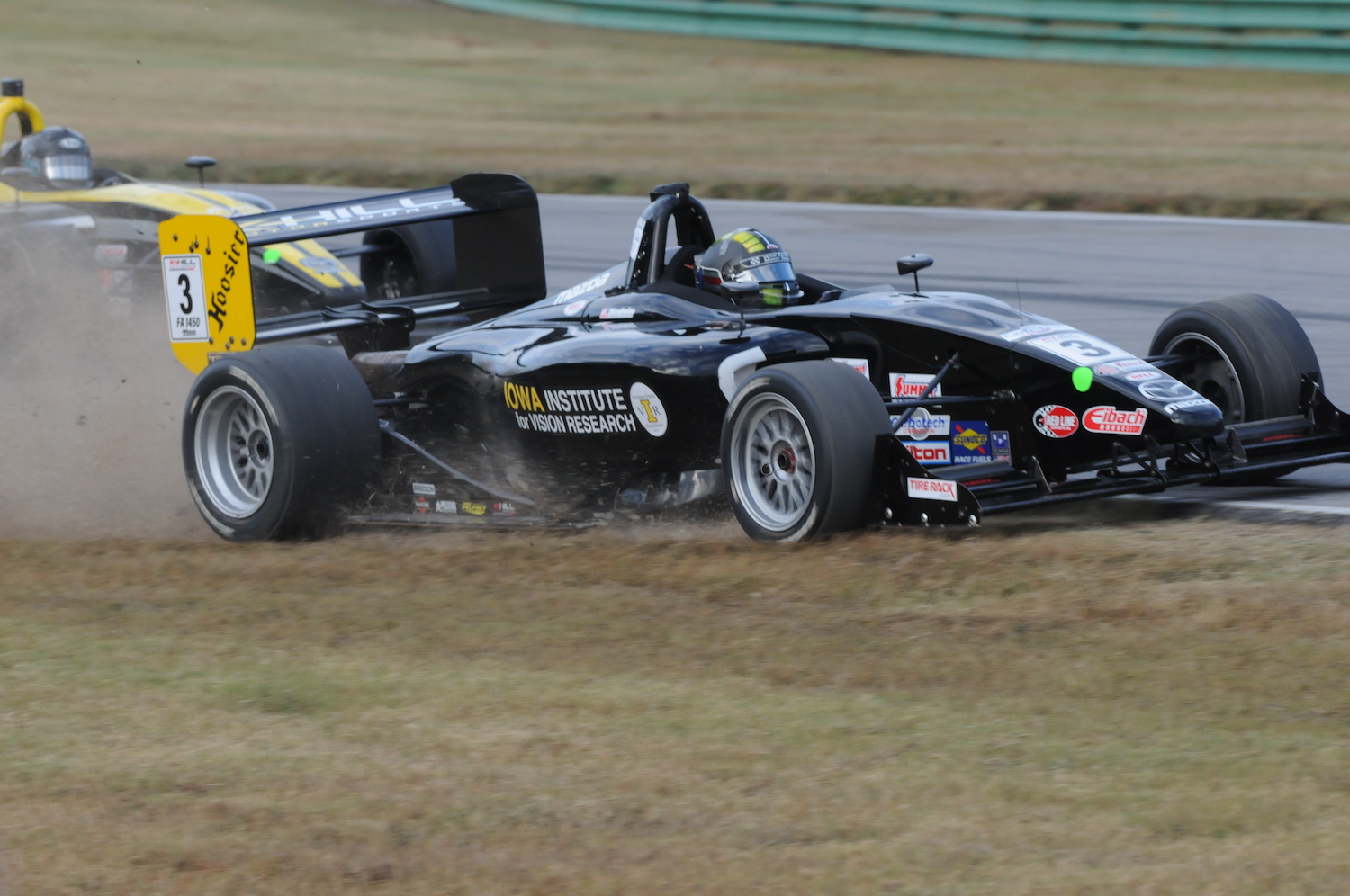The SCCA Runoffs is like Woodstock for car lovers
Every year since 1964, the Sports Car Club of America invites the nation’s best amateur road racers for a one-race grudge match to decide who’s best. The result is three days of the year’s finest road racing. The Runoffs move each year to a different track to make sure the locals don’t have an advantage and in October 2019, the Runoffs were held at Virginia International Raceway, a challenging 3.27-mile road course in the pastures of southern Virginia.
There are 26 different classes, each one caters to either personal preference, or personal finances. The least expensive class is the “FV” or Formula Vee, which are small purpose-built open wheelers powered by an air-cooled VW Beetle engine. A decent one costs about $10,000.
Contrast that to the semi trucks and toter homes carrying any number of six-figure racing cars like the GT-1 machines. Those are custom-built cars made of stout steel tubes and powered by highly modified V-8 engines. They produce well over 500 horsepower, nudge 180 mph on the straights, and average 114 mph around the course.
The FVs top out at 110 yet despite the vast speed and cost differences there’s a common appreciation of the love for racing and the effort it takes to win. Describing the borderline obsession required to take a crown, GT3 champ Jeff Demehl said, “You put in an unbelievable amount of time and effort into this.”

In most classes, there are 10 or more drivers capable of winning which results in electrifying racing. The SRF3 class winner crossed the line just eight inches ahead of the second-place car, a 0.017 second margin of victory. There were 54 cars running in that class, one that is tightly regulated via identical cars to test driver skill over engineering prowess. The cars run in packs, nose to tail or as they put it “nuts to butts” to draft each other. The winner, 27-year-old Clay Russell, wore a cast on his left wrist, a result of an earlier accident.
When he pulled into the pits, a crew member jumped in the car and enthusiastically hugged him. As Russell hoisted the trophy, he said, “I’d like to thank my Dad.” That heart-warming scene illustrated something else: None of these drivers got to the Runoffs alone. Car preparation and pit support is typically handled by family and friends, which lends a welcoming air to the paddock.
I watched a series of post-race interviews and inevitably, one racer would turn and say to anyone listening, “We all help each other, even if we race against them.”
The SCCA is, after all, a club, and as we’ve written about in previous articles, one well-honed to hosting its signature event. The Runoffs last a week, with qualifying and practice over the first few days and the last three for racing. There’s a lot of downtime between sessions, more than enough to tweak the cars, so the entrants and crew fill the evenings with informal tent parties and cookouts. For many, the event is a vacation.

Friday’s races, which I viewed by alternatively standing trackside and from the media center where the professionally produced livestream was broadcast, were the opposite of a Formula 1 event. None of the winners had an easy run to the checkers with thrilling battles throughout the field. Few drivers made dumb mistakes, they all drove with precision and while I expected a very cutthroat NASCAR-like demolition derby, the reality was fierce but clean racing. I saw numerous instances of cars going three abreast into a turn and they all came away unscathed. Everyone had expert command of their cars and they obviously respected each other on the track. Car-to-car contact was rare.
I wondered why these drivers are called amateurs because they displayed more precision and racecraft than one sees in many professional races. They are not novices, they’re experts. (See for yourself by viewing previous races on scca.com. The 2019 Runoffs will be available in a few weeks.)
Before I left the track, I grabbed a taco from a trackside truck and met 59-year-old Tommy Ballester. He lives in Puerto Rico but often comes to the mainland for racing. “There’s nothing like this,” he said, “It’s a serious sport, like guns, and I’m addicted to the art of driving.” He told me about how the car becomes an extension of the driver and it how talks to you. How there’s a grace to driving fast. “The caliber of the drivers here is insane,” he said. Ballester got his start like many others, first by track days, then autocross, and then road racing. This ladder is available to anyone via the Sports Car Club of American and Hagerty Drivers Club members get a discount. It’s worth a try. You will not be bored.







